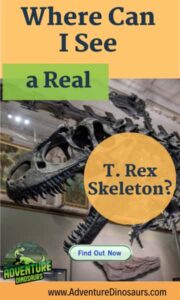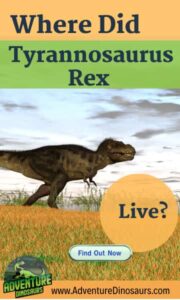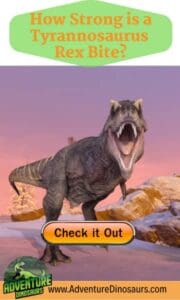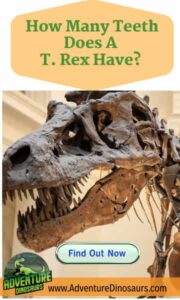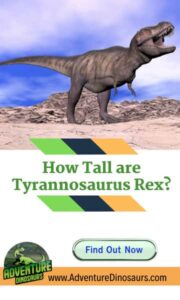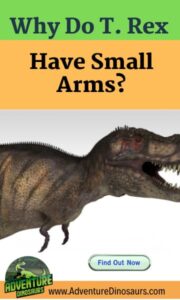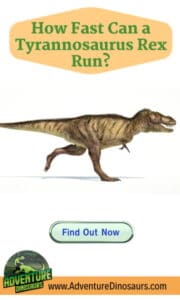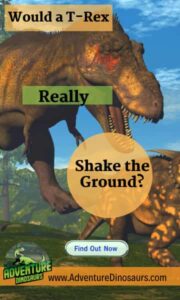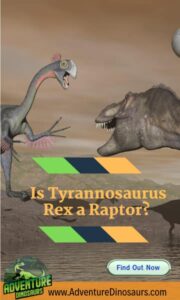Tyrannosaurus rex is undoubtedly the most popular and strongest dinosaur known to science. From studies published in academic journals, galleries, and even the Jurassic Park movies, there is no denying that T. Rex has dominated our thoughts as the key recognizable dinosaur of the past and the present. Now let me attempt to answer what makes T. Rex the most fearsome predator to ever live on this planet.
Tyrannosaurus rex, also known as ‘tyrant lizard king,’ is a dinosaur that dominated the late Cretaceous 66 to 68 million years ago. T. Rex was the largest predator during its time, topping the animal kingdom’s food chain. It has the fiercest and strongest body build that makes it an apex predator feared by all species.
This Ultimate Guide to Tyrannosaurus Rex includes the Series Articles that cover many interesting aspects you need to know about Tyrannosaurus rex. Key questions that are often asked about the T. Rex and different perspectives from scientists are presented in this article as links to related articles (17 so far!). These articles form the collection of Ultimate Guide Series Articles, and you’ll find a short description of the related article and its link.
In this article, you’ll find out why T. Rex was considered the most dangerous predator of the Cretaceous. I’ll take a look at its physical attributes and anatomy and also cover how good it was as a hunter, according to scientists. I will also discuss some of the most famous T. Rex fossils found, their significance to science, and their relevance in the present.
Let’s get started!
[playht_player width=”100%” height=”90px” voice=”en-US-Wavenet-J”]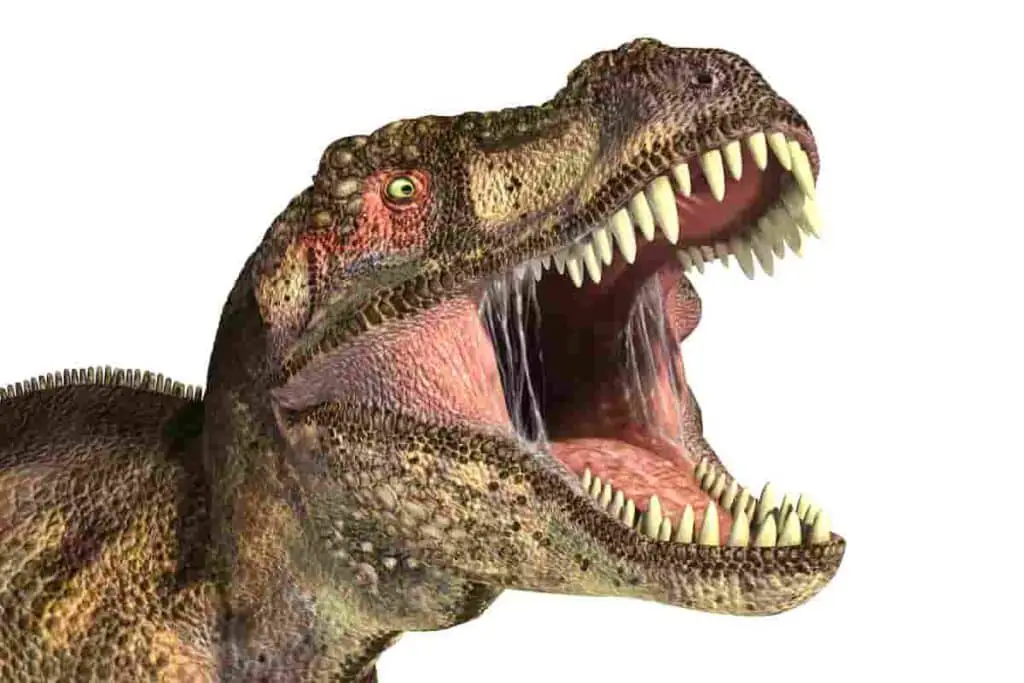
Tyrannosaurus Rex: The King of Dinosaurs
There are numerous dinosaur species that we can consider as powerful, but nothing comes close to Tyrannosaurus rex. And what makes it so, we will find out in this section.
What Makes T. Rex the King of Dinosaurs
Tyrannosaurus rex, or simply T. Rex, is one of the largest carnivorous dinosaurs to ever exist on the planet. Numerous renowned exhibits of its discovered specimens and fossils like the American Museum of Natural History in New York City show how this species is the most celebrated dinosaur discovery of all time. These notable finds are exhibited in many museums which are within the public’s reach that you can visit anytime.
❖ Read Series Article #1 Now!
Why is the T. Rex So Famous? Public View and Scientific View
Series Article #1 takes a look from the public view and the scientific view about why T. Rex is so famous. When considering the publicity surrounding its discovery to the focus paleontologists put on the dinosaur and finally its inclusion in blockbuster Hollywood movies, we find that people of all ages are familiar with the King of Dinosaurs. Other topics include:
—It’s anatomy as a fearsome predator
—A description of some famous T. Rex skeletons
—Some brief conclusions on its fame
—-
❖Read Series Article #2 Now! Where Can I See a T. Rex Skeleton? Key Museums Around The World
Series Article #2 lists multiple museums where you can go and see a real T. Rex skeleton or a replica of the King of Dinosaurs. I list museums in North America, Europe and Asia and describe some facts about the exhibition or the T. Rex presented. The article includes information about where you can see:
––The most complete T. Rex skeleton
—Sue the T. Rex
—Duelling T. Rex and Triceratops
The huge apex predator has amazing body parts that give it the power to dominate the land of the Cretaceous, making it the king of dinosaurs.
The most feared predator has a big skull and powerful jaw, which causes a deadly bite and could crush the prey to the bones. Its long serrated teeth produce lethal septic bites, which could cause infection and death to its enemy.
The small forceful hands are responsible for grabbing prey together with the sharp claws that can slash and cut the animal’s skin many inches deep.
The Discovery of the Tyrant Lizard King
Tyrannosaurus rex were giant carnivorous theropod dinosaurs from the Upper Maastrichtian. They ruled on earth during the Late Cretaceous, 65 to 66 million years ago.
They have lived throughout western North America, on an island continent then known as Laramidia. T. Rex is the last known member of the tyrannosaurids and one of the last non-avian dinosaurs before the Cretaceous-Paleogene extinction, which wiped out the dinosaurs.
The first partial T. Rex skeleton was discovered in 1900 by the famous fossil hunter Barnum Brown, Assistant Curator at the American Museum of Natural History. The skeleton was found in eastern Wyoming.
Brown found another skeleton in 1902 in Hell Creek Formation, Montana. The skeleton was composed of approximately 34 fossilized bones. Furthermore, Brown noted that the remains include the femur, pubes, humerus, three vertebrae, and two undetermined bones. During this time, the Tyrannosaurus rex species was not yet named and recorded.
This skeleton was named Tyrannosaurus rex in 1905 by Henry Fairfield Osborn, president of the American Museum of Natural History. Tyrannosaurus rex came from the Greek words tyrannos (means tyrant) and sauros (means lizard), added with the Latin word rex (means king), hence the alias’ tyrant lizard king’. The name suggests the creature’s size relative to its dominance over other living creatures in its time. (Source)
Osborn named another discovered specimen as Dynamosaurus imperiosus in a paper published in 1905. He later recognized that the two specimens are of the same species, so he chose Tyrannosaurus rex as the final name for the species. These are the only T. Rex discoveries from 1910 up to the 1950s.
YouTube Video About Tyrannosaurus Rex Including Latest Scientific Findings
YouTube video by SciShow that discusses the real Tyrannosaurus rex after a century of scientific knowledge collected about the dinosaur- AdventureDinosaurs
The interest in T. Rex discoveries was later realized during the 1960s resulting in an increased number of skeleton discoveries. Forty-two skeletons were recovered, having from 5-80 percent complete skeleton by bone count. These specimens are found in western North America, where many T. Rexes are known to have lived.
❖Read Series Article #3 Now! Where Did Tyrannosaurus Rex Live: Places We Found Its Fossils
Series Article #3 discusses the North American habitat and hunting grounds of the T. Rex as well as addressing the Asian connection and relatives of the dinosaur. Additional aspects covered:
—Where in the US the dinosaur lived
—Swampy habitats the T. Rex likely hunted
—Differences between Asian & N. A. species
Some Recent Findings Of the King of Dinosaurs
A T. Rex fossil nicknamed Scotty was published in a journal in the year 2019. According to studies, it had outnumbered Sue when it came to mass and years lived. Sue lived for 28 years, and Scotty is thought to have lived until his early 30s, naming it the oldest T. Rex discovered having an unusually long life.
Scotty, weighing about 19,555 pounds, is now considered the world’s largest T. Rex. According to Dr. Scott Persons, a paleontologist at the University of Alberta and the lead of study on the published journal, Scotty is the ‘rex of rexes.’
Its measurements showed that Scotty may have continued to bulk up as it grew older. While this is the biggest T. Rex ever discovered, Dr. Persons believed that there would still be bigger discoveries in the future. Scotty is now displayed at Canada’s Royal Saskatchewan Museum. (Source)
Charles Marshall and his colleagues are researching how many T-rex lived in North America during the Cretaceous Period. According to the team’s findings published in the Journal of Science, about 20,00 adult T. Rexes probably lived simultaneously.
The findings further support the paleontologists’ belief that around 2.5 billion T. Rexes lived and died during their two and a half million years of existence.
T. Rex walked slower than expected of a fast-moving apex predator based on a new study of a Dutch paleontologist. According to their study, a T. Rex could have covered just under 3 miles per hour of walking speed, the speed similar to humans and many other animals today.
Because of the dinosaur’s huge tail, which comprises the lower part of its body, would have preferred to walk slowly than run at full speed. T. Rex’s tail played a big part in choosing the rhythm of its step when walking, following the tail’s bounce when walking.
The study also indicated that T. Rexes do not run when not needed, and increasing the speed (17 to 40 km/hr) it can cover when running would have broken its bone.
Another huge discovery to shake the world of science is the unearthing of the dueling dinosaurs, also known as the Montana Dueling Dinosaurs. The important fossil specimen hailing from the Hell Creek Formation consists of fossilized skeletons of adolescent T. Rex and Triceratops. These skeletons were entangled and fossilized together.
Furthermore, numerous injuries were found in both dinosaurs, including the tooth of T. Rex buried into the Triceratops. Paleontologists perceived that the two creatures had been in a duel when they died and fossilized together. The fossil is now at the North Carolina Museum of Natural Sciences.
Anatomy and Classification of T. Rex
This section talks about the anatomy and classification of Tyrannosaurus rex, the fiercest dinosaur during the Late Cretaceous.
All the Strongest Body Parts of the King of Dinosaurs
T. Rex is called the tyrant lizard king for all the good reasons. It had strong thighs and a tail that allowed its body to move quickly. Studies showed that the giant creature could run at a speed of 17 to 40 kilometers per hour.
The large head and powerful skull that provides T. Rex with a forceful bite would surely give you a nightmare. According to a 2012 study in the journal Biology Letters, T. Rex’s bite is known to be the strongest in any land animal that ever lived, reaching up to 12,814 pounds of bite force. Its thick neck muscles supporting the large skull are responsible for dealing with prey and the enemy.
❖Read Series Article #4 Now! How Strong Is A T. Rex Bite? Plus Some Comparisons
Series Article #4 discusses the incredible bite force of the Tyrannosaurus rex. Summarizing comparisons from recent scientific studies and biomechanics, it explains and compares its bite force with other animals. You will also read about:
—How did scientists measure the bite force—Anatomy of a T. Rex bite—Advantages of having a strong bite
Its mouth full of serrated teeth also housed the largest tooth ever discovered from a carnivorous dinosaur, measuring 12 inches or roughly 30 centimeters long. According to a 2012 study in the Canadian Journal of Earth Sciences, the dinosaur’s teeth are used for a couple of specific purposes.
The front teeth are used for gripping and pulling the prey, while the side teeth are responsible for tearing the prey’s flesh. Its back teeth diced the meat into smaller pieces before being swallowed by the predator. Furthermore, T. Rex’s teeth are wide and dull, making it tougher to deal with struggling prey.
❖Read Series Article #5 Now! How Many Teeth Does a T. Rex Have?
Series Article #5 discusses the teeth of a T. Rex based on the incredible fossil skull discoveries which have been well preserved. It points out the differences in T. Rex skulls and explains the serrated teeth and their uses as a predator. Finally, it has a comparison of other predators’ teeth. Some other things you’ll learn:
––Differences in predator & herbivore teeth
—Characteristics of T. Rex as a top predator
—The exact number of T. Rex teeth
The muscled body of a T. Rexes stretched as far as 40 feet (roughly the width of a school bus) from the tip of its snout to the end of its tail. It weighs up to eight tons and has two strong legs that can easily stomp on small prey. One thing to match a muscular body is an ideal height as a part of the intimidating presence of a T. Rex.
❖Read Series Article #6 Now! How Tall is a T. Rex? Plus Some of the Tallest Skeletons Found
Series Article #6 lays out the difficulty of how to measure height in a T. Rex, and gives some methods that scientists use. It also covers comparisons of height from modern-day animals. You will also read about:
—Accuracy in measuring T. Rex height
—Dinosaurs that were taller than T. Rex
—The largest T. Rex fossil skeleton discovered
——
❖Read Series Article #7 Now! Why Do T Rex Have Small Arms? What Scientists Think
Series Article #7 will give you some new insight into what paleontologists think about the small arms of the T. Rex. You’ll learn about the muscles in the arms, what the possible uses were and some theories scientists have. Additionally, it will cover:
––Anatomy of the arms
—Comparisons to other dinosaur arms
—Evolution of dinosaur forearms
For years, scientists have debated whether the T. Rex’s short arms are of any use to the dinosaur’s body. Despite being short, these arms were powerful, each having two fingers. The arms were muscular, about 3 feet long, and could pull up to 180 kilograms of weight. These measurements were estimated through the size of its biceps. Paleontologists believed that these arms were used to slash prey in close encounters.
Lastly, T. Rex’s sharp claws could cause deadly wounds to prey. Its strong forelimbs and large claws allow the T. Rex to grasp prey and enemy and inflict several centimeters deep wounds to the enemy.
❖Read Series Article #8 Now! How Fast Can a T. Rex Run? What We Know From Fossils
Series Article #8 discusses the running speeds of the T. Rex, including differing views from scientists. It will cover current theories, how these have been impacted by recent discoveries, and how technology is helping paleontologists confirm theories. It will also discuss:
—Who is faster – T. Rex or Velociraptor?
—Did speed help T. Rex be a better hunter?
—The role of balance in running
——
❖Read Series Article #9 Now! Can A Tyrannosaurus Rex Swim? What We Know From Fossils
Series Article #9 looks at the possibility of T. Rex being able to swim. As scientists have evidence that they preyed on sauropods, who were likely to have lived near water areas, this article discusses its likely swimming ability based on fossils and anatomy. It also covers:
—Why would a T. Rex go into the water?
—Could T. Rex swim underwater?
—Plant-eating dinosaurs that lived near water and could have been hunted by T. Rex
——
❖Read Series Article #10 Now! How Would a T. Rex Get Up After Falling?
Series Article #10 discusses how dangerous it was for a T. Rex to fall and how it would stand back up. It looks for clues in anatomy, other dinosaurs such as Allosaurus, and its small arms. Also covered are the topics of:
—How a T. Rex might survive a fall
—Were their arms strong enough to help them get up?
—Comparisons to other animals that fall
——
❖Read Series Article #11 Now! Would a T. Rex Really Shake The Ground?
Series Article #11 discusses something seen often in movies, especially the Jurassic Park movies – whether the dinosaur would really shake the ground! I look at estimated weights and sizes of T. Rexes as well as why stealth is needed as a hunter. It also covers these topics:
—Anatomy of the T. Rex
—T. Rex hunting strengths
—Movement of the T. Rex compared to other dinosaurs
Classification and Phylogeny of Tyrannosaurus rex
Tyrannosaurus is a genus of the superfamily Tyrannosauroidea under the family Tyrannosauridae, and the subfamily Tyrannosaurinae. Other members of this subfamily include the North American Daspletosaurus and the Asian Tarbosaurus.
T. Rexes were once thought to be descendants of large theropods, megalosaurus, and carnosaurs, which lived earlier. These large theropods were recently reclassified under the smaller Coelurosaurs.
In 1955, a new species, Tyrannosaurus bataar from Mongolia, was named by Soviet paleontologist Evgeny Maleev. It was renamed Tarbosaurus bataar in 1965. Despite renaming the species, the analysis found that it is a sister taxon of T. Rex and is considered the Asian species of T. Rex.
The discovery of tyrannosaurid Lythronax further proved the close relationship of Tarbosaurus and Tyrannosaurus with fellow Asian tyrannosaurid Zhuchengtyrannus. A study in 2016 by Steve Brusatte, Thomas Carr, and colleagues says that T. Rex may have been an immigrant from Asia and a possible descendant of Tarbosaurus.
Birds like chickens and ostriches are likely to be the closest living relative of T. Rex. According to research published in science in 2003, scientists Jack Horner and Mary Schweitzer discovered unfossilized material inside a T. Rex bone.
No DNA was recovered from the ancient animal, but they retrieved molecules of collagen. They compared it to 21 living animals from humans, chimps, mice, chickens, ostriches, alligators, and salmon.
The findings show that the collagen recovered was proven to be the most similar to chicken and ostriches, alligators being its next closest match. The study further explains that birds and ostriches are only distant relatives of T. Rex and not very close ones.
There is also a question to scientists whether T. Rex had feathers. Chinese paleontologists have discovered a fossil believed to be an ancestor of T. Rex. It was named Dilong, who lived 128 to 139 million years ago.
According to the experts, protofeathers appeared on the fossil’s tail and jaw, and the fossil is covered with featherlike fibers on the body. Young rexes may have needed these to keep warm.
Xing Xu, a Chinese paleontologist, suggests that the giants may have lost their feathers because they no longer needed them as protection. They may have generated a great deal of body heat on their own.
❖Read Series Article #12 Now! Tyrannosaur Family Characteristics – The Predatory Tyrannosaurids
Series Article #12 describes the family of tyrannosaurs in the context of classification and phylogeny. The Tyrannosaurid fossils have been found on most continents of the world and learn about them in detail in this article. It also covers:
—The 9 genera of Tyrannosaurids
—Features and anatomy of the family
—Key US and Asian species
——
❖Read Series Article #13 Now! Is Tyrannosaurus Rex A Raptor? The Dromaeosaurid Predators
Series Article #13 covers the question about whether T. Rex is a raptor. Looking into this, it details connections between tyrannosaurids and dromaeosaurids, as both groups were skilled predators. It also describes:
—Key features of both groups
—The Velociraptor
—Whether T. Rex and raptors lived at the same time
The Scattered Places T. Rex May Have Occupied in the Past
T. Rex fossils were mostly found in North America, where T. Rex was known to have originated. But recent discoveries are saying otherwise as some new fossil finds were found in Asia and the southern continents.
Famous T. Rex Finds in North America
Here are some of the most famous rexes hailing from the north and their contribution to the world of science.
Sue
The T. Rex skeleton named Sue is the most complete T. Rex skeleton found so far. It was discovered at Cheyenne River Indian Reservation in western South Dakota on August 12, 1990. It is named FMNH PR 2081 and was nicknamed after its discoverer, Sue Hendrickson, an American marine archeologist and paleontologist.
Sue is one of the largest and best-preserved T. Rex specimens ever found. It is an almost complete skeleton with over 90 percent specimens recovered in bulk and is considered the most famous representative of T. Rex. With the almost complete skeleton of Sue, scientists can study and find out about the T. Rex evolution, biology, and growth and behavior.
Scientists believed that Sue had lived for 28 years. They based the age on the dinosaur’s growth rings (like what you’ll find on trees). The examination also determined that Sue has an adolescent growth spurt, gaining about 4.5 pounds daily, reaching its full-grown size at 19. Sue’s sex is still unknown.
Three parties fought a five-year custody battle for the remains of Sue. In a public auction in 1997, the highest bidder to get Sue was The Field Museum, costing them $8.4 million. It was the highest price paid for a fossil before the record-breaking selling price of another T. Rex, Stan.
Sue’s size suggests that the T. Rex was one of the largest carnivores during its time. Two hundred fifty bones were collected out of the approximately 380 bones of a T. Rex, including the furcula (wishbone) and the gastralia, a set of rib-like bones on the dinosaur’s belly. These bones were believed to be part of the dinosaurs’ breathing. Sue measures 13 feet tall at the hips since it does not stand erect and is 40 feet long.
Some of the scientists’ most valuable learnings about Sue are the biomechanics and movement of T. Rex species, dinosaurs’ intellect, the environment the T. Rex lived in during their time and the use of their unusually small arms.
❖Read Series Article #14 Now! 7 Surprising Facts About Sue The Dinosaur- Most Complete T-Rex Fossil
Series Article #14 is all about Sue the T. Rex, from its discovery to its excavation and mounting and finally its purchase. It details some of the amazing findings of the dinosaur by paleontologists and explains some theories that help us understand T. Rexes better. Also covered are::
—The number of teeth
—Estimated age of Sue
—How did the dinosaur die?
Stan
Stan has the world record for the most expensive T. Rex fossil. It was auctioned to Chicago’s Field Museum of Natural History in 1997 for $8.36 million and was sold at $31.8 million to an anonymous buyer last October 6, 2020.
One of the world’s largest and most complete T. Rex skeletons ever found was named after Stan Sacrison, an amateur paleontologist who discovered Stan’s remains. The T. Rex remains were found on private property in 1987 within the Hell Creek Formation, which lies across the states of Montana, South Dakota, North Dakota, and Wyoming. In 1992, the full remains of Stan were recovered after 30,00 hours of labor.
Stan is a 13 feet tall and 40 feet long T. Rex, with 70 percent of the skeleton recovered, including 188 bones. This dinosaur skeleton was dubbed by scientists as the best T. Rex skull ever found, with an almost complete composition, perfectly preserved, and could house up to 58 teeth.
Researchers believed that Stan lived until the age of 20. It is also among the known dinosaurs to occupy the humid and subtropical region of an island called Laramidia, where most T. Rexes are known to have lived.
Stan was indeed a fierce predator, as scientists found partially digested remains of Edmontosaurus and Triceratops in the stomach contents of its fossil remains. These two dinosaurs are known preys and opponents of T. Rex. Wounds were also found on his skull, cheeks, and lower jaw, which suggest that another T. Rex bit Stan during a fight.
The vertebrae in his neck also had a T. Rex tooth-shaped hole, which indicated a bite from the back of his head. The spinal cord was not harmed because if it was, Stan wouldn’t have healed from the wound and lasted for 20 years.
Selling Stan to an individual bothered the scientists. Stan may have been lost to science forever. The public and the researchers wouldn’t even know further findings of the amazing dinosaur.
Jane
Jane, officially known as BMRP 2002.4.1, was the most complete adolescent T. Rex discovered at Ekalaka, Montana, in 2001. It was unearthed by paleontology field crew Carol Tuck and Bill Harrison of Burpee Museum, led by Michael Henderson, Burpee Museum curator.
The remains of Jane were displayed at Burpee Museum of Natural History in Rockford, Illinois, after four years of preparation upon discovery. Jane also featured and was made famous in an exhibit called “Jane: Diary of a Dinosaur.”
Studies showed that Jane is an 11-year old T. Rex, a small tyrannosaurid dinosaur from the Hell Creek Formation. It had a small and slender body and large feet. It also had long legs, meant for running at an estimated 20-30 miles per hour. Seventeen curved, serrated teeth occupied its lower jaw. (Source)
Measuring 21-foot long, Jane is a bit more than half the length of Sue, the largest known T. Rex before Stan. Its weight is probably between 639 kg and 1,269 kg, according to Hutchinson et al.(2011). Despite having a female name (named after Jane Solem, a Burpee Museum benefactor), Jane’s sex is still unknown to scientists.
Wankel Rex
Wankel rex was discovered in Montana in 1988 by a rancher named Kathy Wankel while on a family camping trip in Montana. The bone sticking out of the ground would have been one of the most valuable fossils found, an addition to the rich studies made with T. Rex. A team excavated the T. Rex specimen under the Museum of the Rockies, led by paleontologist Jack Horner. It was given the official name MOR 555.
The specimen is 46 percent of the skeleton, including the skull and a complete forelimb. Wankel rex was estimated to be around 11.6 meters long and weighs between 5.8 to 10.8 tons, with 8.3 tons being the average estimate. (Source)
Wankel rex was a large skeleton with the first-ever discovered complete forelimb. Old findings suggest that T. Rex’s short two-fingered arms have no use for the huge dinosaur. But Wankel rex says differently. Paleontologists found that they have strong arms evident in the large muscle attachment. According to some theories, these arms were usually used to hold one’s mate or push their body up when lying down.
The T. Rex was estimated to have lived up to 18 years, a not full-grown adult. Recent studies had found that Wankel rex may have weighed 9 tons, expected of a strong and bulky dinosaur species.
Doctoral candidate Mary Schweitzer studied if the fossilized bones still contain biological molecules and found heme, a biological form of iron making up hemoglobin. This study makes Wankel rex the first dinosaur fossil skeleton studied for biological molecules and one of the most important T. Rex fossils ever found.
T. Rexes are Continuously Found in Other Countries
T. Rex may have originated from Asia. Many T. Rex fossils are found in western North America, but there is a possibility that T. Rex is an invasive species from Asia. According to a study published in Scientific Reports in 2016, the analysis of T. Rex’s skeletal features showed resemblance to two Tyrannosaurs in Asia, named Tarbosaurus and Zhuchengtyrannus.
These species may have crossed from Asia to North America 67 million years ago. Researchers said these findings were initial, and many experts still believed that T. Rex evolved in North America.
Baby Louie: The Fossil Egg
Baby Louie, a tiny dinosaur inside a giant egg, was officially named ‘Baby dragon’ 20 years after being featured in National Geographic. Baby Louie was found in Henan, China, in early 1993. Around this time, no one knew about its species, so it was named Macroelongatollithus, like most giant eggs with unclassified families. The tiny dinosaur was named after Louie Psihoyas, a photographer of the National Geographic where the fossil egg was featured.
Based on the journal Nature Communications a giant bird-like dinosaur may have laid these two feet-long eggs. Scientists studied it comprehensively and called the 90-million year fossil Beibeilong sinensis, a baby dragon from China. They are imagined to be very bird-like in life, says Darla Zelenitsky, a paleontologist at the University of Calgary.
Baby Louie was perceived as an overgrown cassowary (ostrich relative), though they may have been taller than ostriches. The adult species of this dinosaur may have been more than 25 feet long, weighing more than 3 tons.
The fossilized egg would have belonged to a bird-like group called oviraptors, a species under the same group of theropods. However, oviraptor eggs are extremely common, according to Zelenitsky, nothing like Baby Louie. Oviraptors are known to be small-sized species, and only three giant oviraptor skeletons were found, including Baby Louie. So the species is still in question if it truly belongs to oviraptors. (Source)
Gigantic dinosaur eggs are continuously being found in various places such as China, Korea, Mongolia, Spain, Argentina, and the United States. And years have gone by, but the species has not yet been included in any dinosaur family. Giant oviraptors may have roamed in places where the enormous eggs are found, but no evidence of giant oviraptors was found. According to David Varrichio of Montana State University, identifying Baby Louie’s lineage would help scientists understand how they reproduced and how they nurtured their young.
In the year 2007, scientists’ biggest question about Baby Louie’s lineage was answered. The first giant oviraptor skeleton was found in China called Gigantoraptor, a 3000-pound feathered beast. This size of oviraptor would indeed be able to lay gigantic eggs like the fossilized Baby Loue. Beibeilong (Baby Louie) is now the second giant oviraptor found. Paleontologists have yet to find a confirmed T Rex dinosaur egg despite the exciting discovery of dinosaur embryos like Baby Louie.
The Southern Tyrannosaurus
Scientists from Cambridge, London, and Melbourne identified a hip bone found at Dinosaur Cove in Victoria, Australia, and named it NMV P186069. This dinosaur belonged to the T. Rex ancestor, evidence that T. Rex also existed in the southern continents.
The 30-centimeter long pubis bone looks like a rod with two expanded ends and is simply identifiable as T. Rex bones, as they have distinct hip bones. Dr. Roger Benson from the Department of Earth Sciences at the University of Cambridge also said that small and young T. Rexes may have lived worldwide. They just do not get to go to the south with the other T. Rexes.
Vectaerovenator Inopinatus
A recent discovery of an assumed T. Rex relative was found on the Isle of Wight, on the southern coast of mainland England. The four bones found at three separate locations at Shanklin beach in 2019 were believed to be new species of theropod dinosaur that lived in the Cretaceous period, 115 million years ago.
The new species were estimated to be thirteen feet long and are displayed at Dinosaur Isle Museum at Sandown. The large space of air sacs in some bones is a key trait that leads scientists to connect it to theropods. Air sacs are extensions of the lungs that aided in the dinosaurs’ breathing.
❖Read Series Article #15 Now! Where Are T. Rex Fossils Found? Some Key Sites
Series Article #15 identifies the key places, like the Morrison Formation in the USA, where T. Rex fossils have been found and excavated. It looks not only at the US sites, but the ones found in Asia too. It also covers:
—Key formations in the USA
—Famous T. Rex fossil discoveries in USA
—Famous T. Rex fossils found in China
T. Rex’s Predatory Behavior: The Hunt for the Next Prey
As the number one predator in the Late Cretaceous, let us know how the apex predator hunts for its food. What could be the tragic ending a prey would experience in its hand, or should I say, in its mouth!
Tyrannosaurus Rex: An Apex Predator
Apex predators are the most dominant and feared animal in the animal kingdom. They were able to eat what they wanted, and any animal could be their prey. T. Rex is undoubtedly the apex predator in its time. It is superior to all other dinosaurs and does not have a natural enemy to match its strength. The fierce and powerful predator positioned itself at the top of the food chain, and no other animals would get to prey on them.
❖Read Series Article #16 Now! What Are The T. Rex Enemies? What Scientists Suggest
Series Article #16 discusses whether scientists think the T. Rex had any enemies. Many believe T. Rex to be the apex predator and had few enemies. It also looks at the topic of:
—How did the T. Rex fight
—What could beat a T. Rex
—Dinosaurs that might have challenged T. Rex
T. Rex had a massive body and a giant skull reaching a colossal 1.5 meters in length. It also had the most poisonous and powerful bite ever recorded, which could tear prey into pieces very easily. T. Rex possibly preyed on huge dinosaurs like Edmontosaurus and Triceratops, as evidence suggests bite marks of T. Rex in these dinosaurs’ fossils.
A predator about the size of a school bus, weighing 5 to 8 tons and measuring 40 feet long and 12 feet tall, would entail terror to other creatures living during its time. Its sharp serrated teeth had a bite force that could crush a car and arms and feet that could easily stomp and slash prey.
Apart from physical strength, T. Rex has a well-developed brain. Based on T. Rex’s fossilized skulls and brain computerized tomography scans, the dinosaur’s optic nerve could seamlessly carry necessary information about hunting for food. Their incredible sense of smell also plays a great role in locating possible prey.
The T. Rex As a Hunter – How Good Were They and What They Ate
The Late Cretaceous apex predators primarily feasted on herbivorous dinosaurs like Edmontosaurus and Triceratops. They acquired food through hunting and scavenging and grew fast by eating hundreds of pounds at a time, said David Burnham, a paleontologist at the University of Kansas. They most probably fed on a scarce source of carcasses but would often hunt and kill to satisfy their hunger.
❖Read Series Article #17 Now! Was Tyrannosaurus Rex an Apex Predator? Plus The Criteria To Be Apex
Series Article #17 looks at what makes an apex predator, and why T. Rex qualifies. It discusses what an apex predator influences, like the ecosystems. Some topics covered are:
—What kind of apex predator was T. Rex
—Other apex predator dinosaurs
—Possible enemies of T. Rex
However, the theory of T. Rex being a deadly hunter was only a presumption by scientists for years. According to Burnham, the only evidence that T. Rex indeed hunts for food are bones with bite marks, teeth near carcasses, and foot tracks suggesting pursuits.
In 2013, evidence was found to prove that T. Rex is indeed a predatory hunter. Burnham and colleagues’ study published in the journal Proceedings of the National Academy of Science revealed a T. Rex tooth embedded in a duckbill dinosaur’s tailbone. It suggests the T. Rex would have fought and bitten the dinosaur. The tailbone healed over the tooth, and the prey probably escaped the attack.
Paleontologists Unanswered Questions About T. Rex
Paleontologists are still finding out whether T. Rexes practice cannibalism. A 2010 analysis of T. Rex bones published in PLOS ONE reveals T. Rex bones with deep gashes from its own species. However, it is still unclear if this is a sign of cannibalism or if they just ate the remains of dead T. Rex.
In 2014, researchers found dinosaur track marks in the foothills of the Canadian Rockies in British Columbia. Seven track marks were found, and three of these are from Tyrannosaurids, most likely Albertosaurus, Gorgosaurus, and Daspletosaurus. A study published in PLOS ONE suggests that T. Rex’s relatives may have hunted in packs.
Researchers had several years-long debates about the speed of T. Rex. Recent findings show that T. Rex is more of a slow walker than a fast runner. Based on a computer simulation of the tail movement, T. Rex would have walked slower and could just cover 3 miles per hour, equal to human walking speed.
Any minimal movement would cause their tail to bounce up and down. Researchers further noted that this is only the preferred walking speed of the species and not its maximum speed.
Fact Check: Most Interesting Facts You May Not Know About T. Rex
Here are some of the most interesting facts not well known to the public regarding Tyrannosaurus rex.
T. Rex may be huge, but its predecessors were small. The first Tyrannosaurus lived about 170 million years ago during the mid-Jurassic, with human-size to horse-size body measurements and build.
A study on a newfound species named Timurlengia euotica, a mid-Cretaceous tyrannosaur, revealed that advanced brains developed when they were small helped them become the apex predator when they grew size.
The journal Historical Biology states that T. Rex’s jaw had sensors. The nerve sensors are located at the tip of the jaw. Furthermore, the nerves in the mandible of T. Rex are most distributed compared to other dinosaurs making T. Rex sensitive to the difference in material and movement.
These sensors also enabled T. Rex to detect better and eat prey. They were possibly able to recognize the parts of their prey and eat them differently, not just stuffing the whole prey thing in its mouth.
Tyrannosaur dinosaurs may have been social animals. Research made on a unique fossil site inside Utah’s Grand Staircase- Escalante National Monument revealed that the site contains remains of several dinosaurs of the same species. Scientists hypothesized that they died at the very same spot and were fossilized together. It was further interpreted as tyrannosaurids being capable of socializing with their pack.
Conclusion
Knowing that Tyrannosaurus rex is the king of dinosaurs is one thing, and understanding why is another. These pieces of knowledge and proven facts from scientists and paleontologists give life to dinosaurs’ history in the present time. With this ultimate guide, we can shed light on all of the confusing questions about T. Rex and its life as the strongest and fiercest dinosaur to ever live on the planet.


